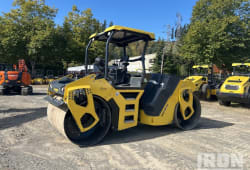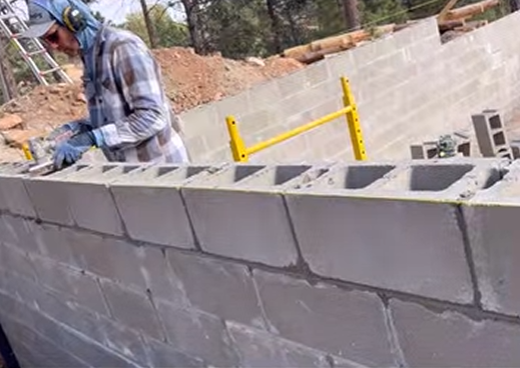Benefits of Using a Concrete Pump for Your Construction Project
7 Lectura mínima
)
junio 30, 2023
Undertaking a construction project can be a daunting task, and one of the key factors to consider is how to ensure efficient and effective delivery of concrete to the job site. This is where concrete pump trucks come in, offering a reliable and cost-effective solution for concrete placement. They provide a means to transport concrete without the need for manual labor, thereby increasing efficiency, productivity, and safety while minimizing wastage. In this article, we will explore the various benefits of using a concrete pump for your construction project.
Understanding Concrete Pump trucks
What is a Concrete Pump?
A concrete pump Truck is a machine used to transport liquid concrete from one location to another. The liquid concrete is placed in a hopper, which is then pumped through a pipeline to the desired location. Concrete pumps come in various sizes and types, each designed for specific construction projects.
Concrete pumps are an essential piece of equipment in the construction industry. Trailer-mounted concrete pump is used to move liquid concrete from the mixing truck to the location where it will be poured. This makes the process of pouring concrete much faster and more efficient compared to traditional methods.
Concrete pumps are also used in hard-to-reach locations, such as high-rise buildings or structures with limited access. They can pump concrete to heights of up to 200 meters, making them ideal for pumping tall buildings.
Types of Concrete Pumps
There are two main types of concrete pumps: line pumps and boom pumps. Line pumps are used for smaller construction projects and are mounted on a truck or trailer, making them highly maneuverable. They are also known as stationary pumps. Line pumps are ideal for residential construction, such as pouring foundations or driveways.
Boom pumps, on the other hand, are larger and are mounted on a truck or placed on a trailer. They have a hydraulic arm and are ideal for larger projects such as high-rise construction. Boom pumps can reach up to 60 meters and can pour concrete at a rate of up to 150 cubic yards per hour. They are also known as truck-mounted pumps.
Another type of concrete pump is the skid-mounted pump, which is a stationary pump mounted on a skid. Skid-mounted pumps are used for smaller projects and can pump concrete up to 100 meters horizontally and 50 meters vertically. Concrete pumps can also be categorized based on the type of valve they use. Ball valve pumps are used for larger aggregate concrete, while S-valve pumps are used for finer concrete mixtures.
Overall, choosing the right type of concrete pump depends on the specific requirements of the construction project. Factors such as the size of the project, the location of the pour site, and the type of concrete being used all play a role in determining which type of pump to use.
Increased Efficiency and Productivity
Faster Concrete Placement
One of the most significant benefits of using a concrete pump is that it allows for faster concrete placement. Traditional concrete placement methods involve manual labor, which is time-consuming and can cause delays in the project. Concrete pumps, however, are automated and can place concrete at a much faster rate than other methods, reducing the time spent on a project considerably.
The use of concrete pumps also ensures that the concrete is placed with precision and accuracy, reducing the need for additional labor to fix any mistakes. This precision also leads to a smoother finish, eliminating the need for extensive finishing work.
Reduced Labor Requirements
Manual concrete placement requires a considerable amount of labor, leading to high labor costs. Concrete pumps require minimal labor, with only a few operators required to operate the machine. This reduces labor costs significantly, freeing up resources for other aspects of the project.
Additionally, the use of concrete pumps reduces the risk of injury to workers. Manual concrete placement involves heavy lifting and repetitive motions, which can lead to strains and injuries. The use of concrete pumps eliminates this risk, creating a safer work environment for all involved.
Improved Concrete Quality
Concrete pumps provide a consistent and high-quality concrete mix. Traditional concrete pumping methods such as manual placement can result in an inconsistent mix with air pockets, leading to weak spots in the concrete. Concrete pumps eliminate this problem, ensuring that the concrete mix is of high quality and uniform throughout the project.
Furthermore, the use of concrete pumps allows for the placement of concrete in hard-to-reach areas, such as tight spaces such as high-rise buildings, or structures with complex designs. This ensures that the concrete is placed uniformly, regardless of the structure's design, leading to a stronger and more durable finished product.
In conclusion, the use of concrete pumps has revolutionized the construction industry by increasing efficiency, reducing labor requirements, and improving concrete quality. As technology advances, the use of concrete pumps will continue to play a vital role in the construction process, allowing for faster, safer, and more precise concrete placement.
Enhanced Safety and Reduced Risk
Minimizing Worker Fatigue
Manual concrete placement can be tiring and physically demanding for workers, leading to fatigue and increasing the risk of accidents and injuries. Concrete pumps eliminate the need for manual labor, reducing the risk of accidents and minimizing worker fatigue, thereby improving safety on the project site.
Furthermore, concrete pumps also reduce the risk of repetitive strain injuries, which can result from the repetitive motions involved in manual concrete placement. This is particularly important in large-scale construction projects, where workers may be required to place concrete for extended periods.
Lowering Accident Rates
Concrete pumps reduce the risk of workplace accidents by eliminating the need for workers to handle and transport heavy loads of concrete manually. This reduces the risk of accidents and injuries on the construction site, improving the overall safety of the project.
In addition, concrete pumps also reduce the risk of accidents that may occur during the transportation of concrete from the mixing site to the placement site. This is because concrete pumps can transport concrete over long distances and through difficult terrain, reducing the need for workers to manually transport the concrete.
Improved Site Accessibility
Concrete pumps make it possible to place concrete in hard-to-reach areas, such as high-rise buildings or underground structures. This improves the accessibility of the construction site and reduces the need for additional equipment or labor to access these areas manually.
Moreover, concrete pumps can also be used to place concrete in areas that are difficult to access due to environmental or logistical constraints. For example, concrete pumps can be used to place concrete in areas with limited space or where access is restricted due to nearby buildings or infrastructure.
Overall, the use of concrete pumps not only improves safety and reduces the risk of accidents and injuries on construction sites, but also enhances the efficiency, greater flexibility, and accessibility of the construction process.
Cost-Effectiveness of Concrete Pumps
Reduced Labor Costs
As mentioned earlier, concrete pumps require minimal labor, which reduces labor costs significantly. This frees up resources for other aspects of the project, leading to cost savings in the long run.
Lower Material Wastage
Manual concrete placement can result in a considerable amount of material wastage due to spills and uneven placement. Concrete pumps eliminate this issue by providing a consistent flow of concrete, minimizing the amount of material wasted.
Decreased Project Delays
Concrete pumps speed up the construction process, reducing the time taken to place concrete and allowing for faster completion of the project. This minimizes the risk of delays, which can be costly and disrupt the project timeline.
Conclusion
Concrete pumps offer a range of benefits for construction projects, from increased efficiency and productivity to improved safety and cost savings. By considering the advantages of using a concrete pump for your project, you can ensure that your construction project is completed with a high level of quality, safety, and efficiency.














